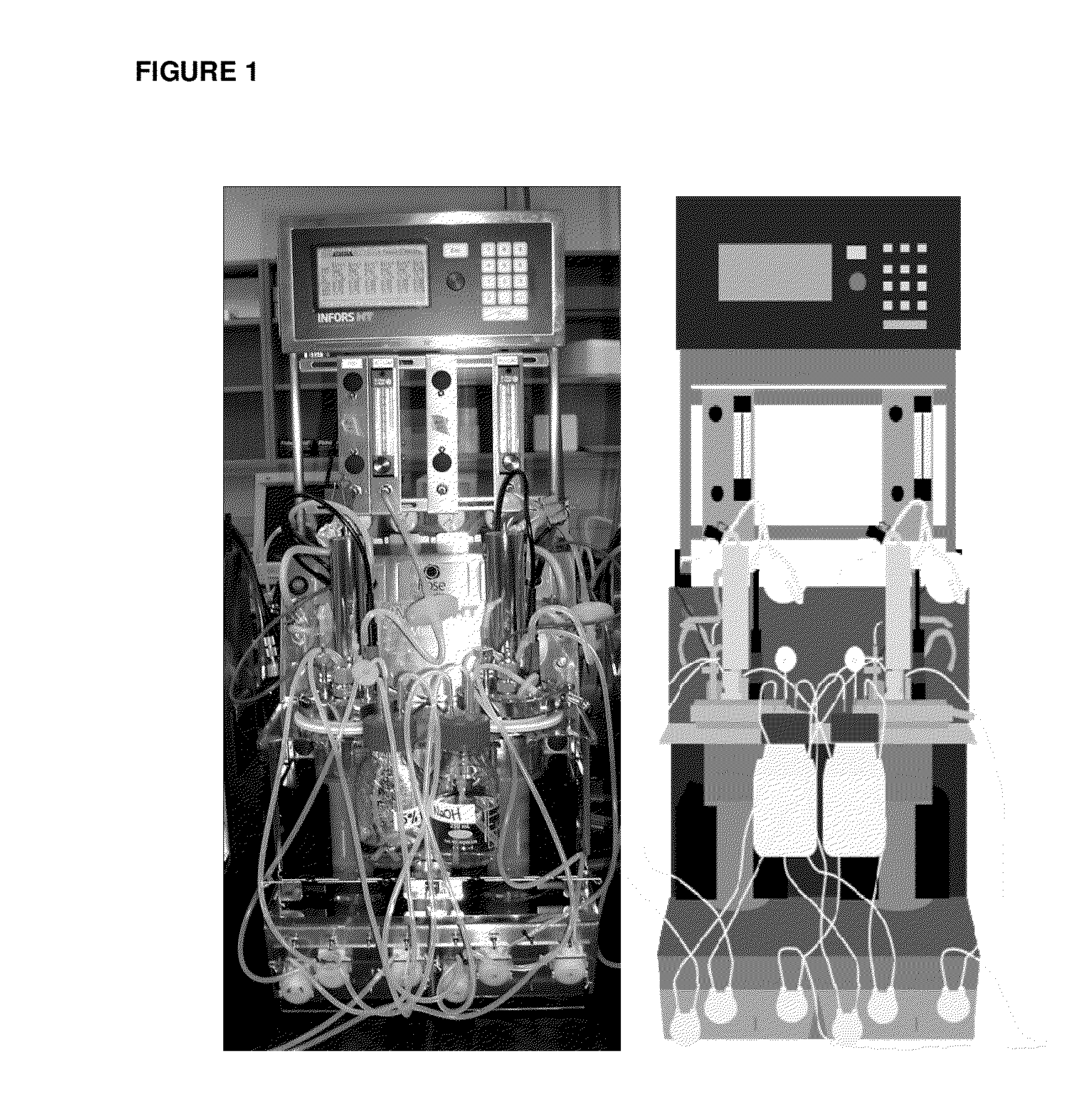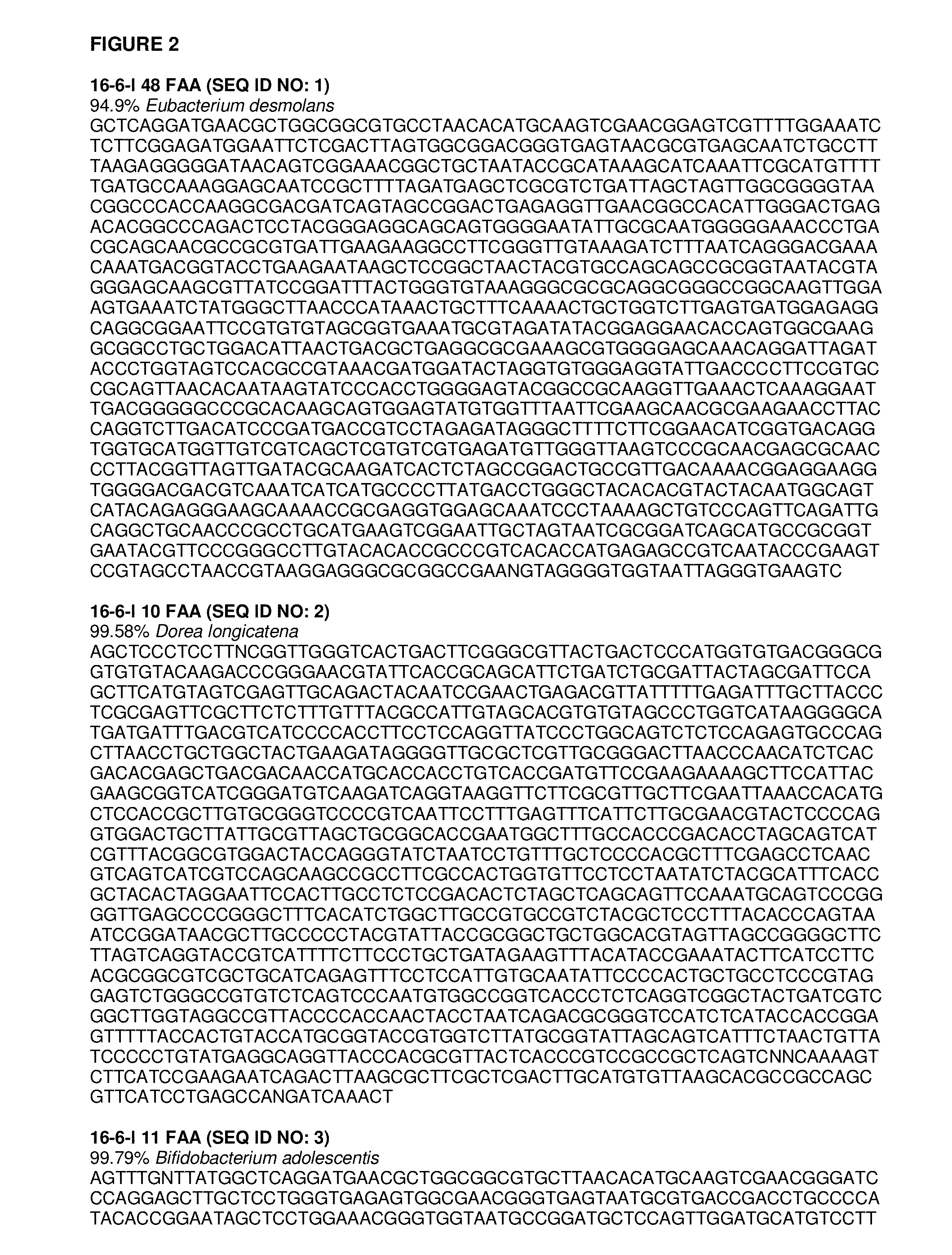Method for treatment of disorders of the gastrointestinal system
a gastrointestinal system and disorder technology, applied in the field of synthetic stool preparation, can solve the problems of reducing inflammation, and affecting the treatment effect of patients with multiple recurrences, so as to prevent recurrence and reduce inflammation
- Summary
- Abstract
- Description
- Claims
- Application Information
AI Technical Summary
Benefits of technology
Problems solved by technology
Method used
Image
Examples
example 1
Isolation of Bacterial Strains
[0112]A healthy donor was identified and screened for suitability as a fecal transplant donor using a standard panel of microbiology tests. The most important criterion for donor selection was the donors prior exposure to antibiotic therapy. Our donor had only one reported antibiotic exposure, 5 years prior to donation, and cannot recall having had any during her childhood, which is believed to be the critical time during which the gut microbiota develop.
[0113]All the bacterial strains used in the synthetic stool preparations of the invention were isolated from a single donor. Without wishing to be bound by theory, it is believed that strains that have evolved together in one host may work synergistically together and that it may therefore be preferable to use strains isolated from a single donor.
[0114]The donor was asked to void feces in a private bathroom near the lab, into a provided sterile pot. The pot was immediately transported to the lab and pla...
example 2
Antibiotic Resistance Profiling of Isolated Bacterial Strains
[0145]For antibiotic resistance profiling, the standard Bauer-Kirby method of antibiotic disc diffusion was used. Each isolate was separately cultured according to optimal conditions (see Table 3), and then a suspension was made to McFarland standard of 0.5 in sterile, pre-reduced saline. 100 uL of this was spread onto agar plates containing agar formulations optimal for the tested strain (as shown in Table 3). To the surface of the inoculated plates, an antibiotic disc was applied (antibiotic discs were purchased from Sigma). Plates were inoculated for 1-4 days, depending on the isolate, until good growth was seen. The zone of clearance (area with no bacterial growth) around each disc for each strain was then measured in mm using a ruler. The larger the zone of clearance, the more sensitive the tested isolate to the tested antibiotic. Zones of clearance are given as measurements of the diameter of the zone of clearance (i...
example 3
Treatment of CDI Using a Synthetic Stool Preparation
[0149]Here we describe the use of a synthetic stool preparation to treat recurrent CDI which failed repeated standard antibiotic treatments. We report the successful outcome of 2 patients with recurrent CDI unresponsive to conventional therapy who received a “synthetic” stool preparation of 33 different intestinal bacteria isolated in pure culture, from a single healthy donor. Patients reported complete cure of recurrent CDI after receiving the synthetic stool preparation, and remained symptom free after 6 months of follow-up. Bioinformatic analysis demonstrated that microbial profile reverts to features of the synthetic stool in each case.
[0150]Embodiments of the synthetic stool preparation shown in Tables 2 and 2a were used in these studies. The terms “RePOOPulate” (also abbreviated “RP” for “RePOOPulate Preparation”) and “MET” are used interchangeably herein to refer to embodiments of the synthetic stool preparation shown in Tab...
PUM
 Login to View More
Login to View More Abstract
Description
Claims
Application Information
 Login to View More
Login to View More - R&D
- Intellectual Property
- Life Sciences
- Materials
- Tech Scout
- Unparalleled Data Quality
- Higher Quality Content
- 60% Fewer Hallucinations
Browse by: Latest US Patents, China's latest patents, Technical Efficacy Thesaurus, Application Domain, Technology Topic, Popular Technical Reports.
© 2025 PatSnap. All rights reserved.Legal|Privacy policy|Modern Slavery Act Transparency Statement|Sitemap|About US| Contact US: help@patsnap.com



